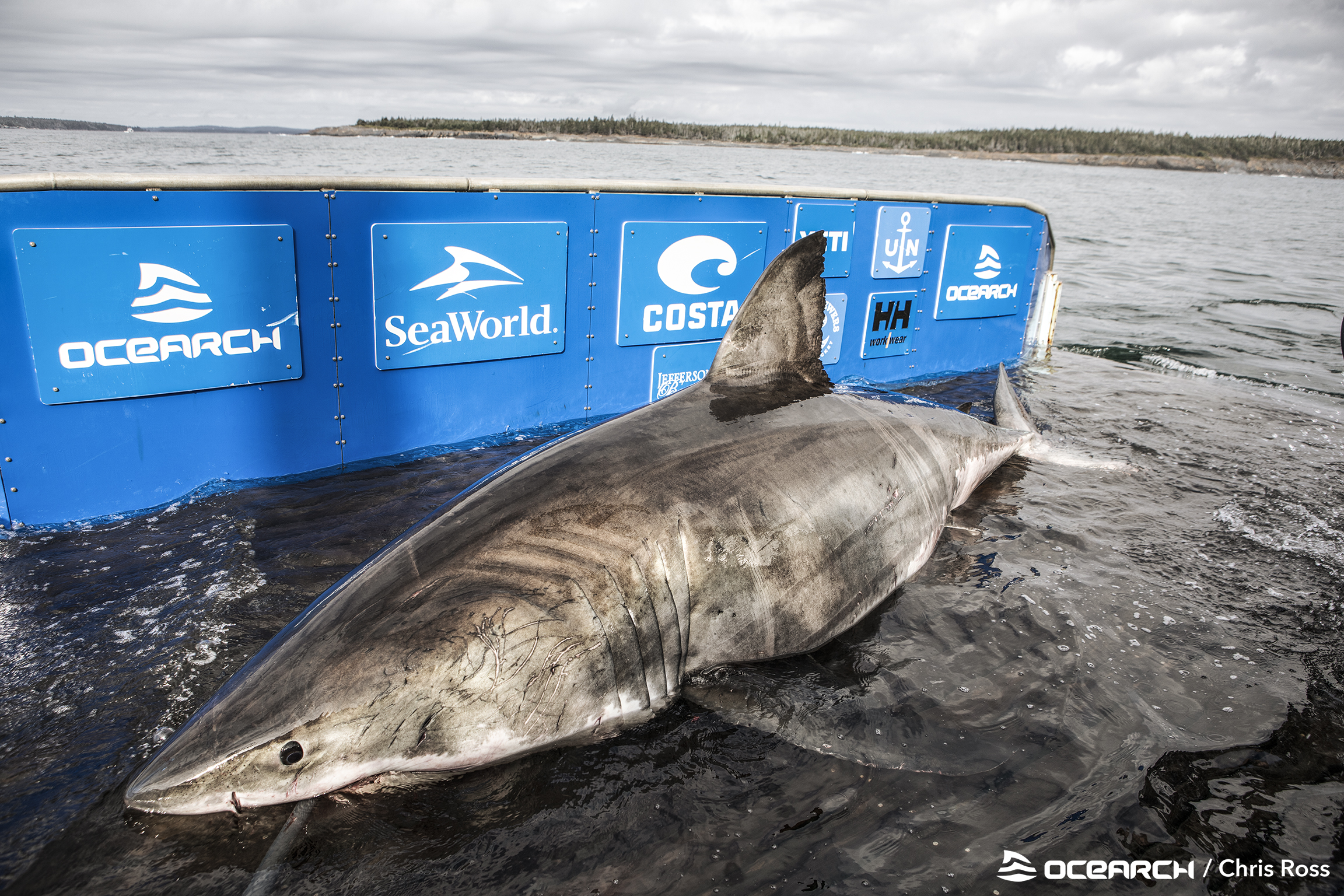The scientist who caught one of the biggest great white sharks ever recorded in the Northwest Atlantic has described the “sense of awe” he felt for the animal.
The white shark, which has been named “Nukumi” and dubbed “queen of the ocean,” measures 17 feet and 2 inches in length and weighs 3,541 pounds, making it the largest that marine research organization OCEARCH has ever caught in this part of the world.
She is estimated to be around 50 years old and was tagged just off the coast of Nova Scotia, Canada—an important hotspot for great white sharks in the Northwest Atlantic.
“Handling an animal of this size hits you in a different way from an emotional standpoint,” OCEARCH founding chairman and expedition leader Chris Fischer told Newsweek. “You feel this sense of awe for the animal. You sense its age and get this feeling of ancientness, seeing all of its old scars and marks from a long-lived life.”
“There is also a sense of respect for the animal as you consider all the wisdom it must possess after spending so much time finding food, mating, giving birth to many litters of baby sharks, and helping to maintain the balance of life in the sea.”
Female great whites can grow up to around 20 feet long, but the average is around 15 to 16 feet. Like most shark species, female great whites, such as Nukumi, tend to be larger than males.
There is some debate as to which is the largest great white shark ever recorded, with no clear winner.
A great white caught off the coast of Havana, Cuba, in 1945 reportedly weighed 7,100 pounds and measured 21 feet in length, although later research suggested that the size of this specimen had been overestimated by around five feet.
American shark expert, John Randall, who died in April this year, said that the largest reliably measured great white was a 19.7-foot-long specimen spotted near Ledge Point, Western Australia, in 1987.
Meanwhile, a shark dubbed “Deep Blue” that was filmed off the coast of Mexico by a Discovery Channel documentary crew was estimated to measure around 20 feet in length.
“We have tagged a few animals that were larger than her at Guadalupe Island, Mexico, and saw some similarly sized in South Africa, but Nukumi is very close to as big as we’ve encountered anywhere,” Fischer told Newsweek.
In order to tag sharks like Nukumi, the OCEARCH team uses a modified drumline—a type of aquatic trap—to catch the animals before guiding them onto a special lift on the research vessel. The sharks are then lifted onto the deck, where researchers fit them with a monitoring tag and take a variety of samples.
Despite Nukumi’s large size, catching the animal and hauling her onto the OCEARCH research vessel was “not a tricky process,” according to Fischer.
“Our experienced fishing team is plenty capable of safely handling an animal of this size and the process is exactly the same as we use on smaller sharks,” he said.
The team took blood samples, performed an ultrasound, took fecal samples, parasite samples, bacteria samples, measurements and much more.
Experts think there may be two sub-populations of white sharks in the Northwest Atlantic, both of which use either the Cape Cod or Nova Scotia feeding sites. Scientific research into these animals is important given that their numbers are thought to be declining, although there is little reliable data on the overall size of their population.
The International Union for Conservation of Nature classifies great white sharks as “vulnerable” on its Red List of Threatened Species.
Fischer said Nukumi was likely frequenting the waters off Nova Scotia for the same reason many other sharks in the area are.
“The Canadian Maritimes is a region full of life and abundance where she and other white sharks can spend the warmer months of the year feeding on plenty of fish as well as seals,” Fischer said.
“We initially suspected white sharks might be mating in Nova Scotia, but after three expeditions to the area we have not found much evidence pointing to that being the case. Instead, it seems Nova Scotia is a feeding aggregation site.”
Sharks tagged by OCEARCH are fitted with a tracking device that “pings” every time the animal’s fin breaks the surface of the water. When this happens, the device emits a signal, enabling the scientists to pinpoint its location. If you would like to follow Nukumi’s movements, visit OCEARCH’s tracker here.
